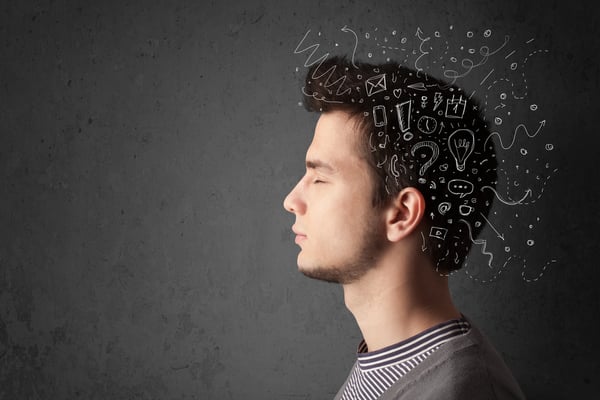Why is mindfulness easier for some of us to practice than others?
Have you ever heard the phrase, “Stop the world! I want to get off!”? In our fast-paced world, we often feel overloaded from our daily interactions and technology. We may feel drained, lose focus, and become less productive. Mindfulness is a way to help us refocus and recharge our energies.
First, let's understand mindfulness a little better.
What is Mindfulness

Mindfulness, according to the Mayo Clinic, is designed to help you focus on being more aware of where you are and what you’re doing, without feeling pressured or overwhelmed by the environment. Mindfulness is a state of being aware and present in the moment without judgment. It is designed to help us manage our mental health and well-being.
There are different ways to practice mindfulness. A simple way is to meditate; by sitting quietly and focusing only on your natural breathing or silently repeating a mantra. Some people may find focusing on emotions a good way to recenter. Accept the emotions, without judgment, and let them go.
Mindfulness is designed to help us better manage stress and help us to recharge when we feel drained from our current environment. However, we don't all recharge the same way. For example, meditating or finding a quiet place to slow down and refocus is highly effective for some people. While others may find those same methods to be frustrating and harder to adopt. Understanding our behavioral preferences, may help us be better prepared to practice mindfulness.
How DISC benefits mindfulness
 We can probably agree that getting started is one of the hardest parts to practicing mindfulness. DISC can help us get started and also be more effective in practicing mindfulness. Awareness of our DISC styles help us approach mindfulness in a more productive way.
We can probably agree that getting started is one of the hardest parts to practicing mindfulness. DISC can help us get started and also be more effective in practicing mindfulness. Awareness of our DISC styles help us approach mindfulness in a more productive way.
What may feel calming or energizing for one person, may cause stress for another. Some styles may find it difficult to slow down or focus on their breathing, while others may find it an easy way to recharge, but they just forget to do it. Still, others may find walking more relaxing while listening to a podcast or getting in a strenuous workout.
While no one disagrees that we all need time to relax and recharge, our style can help predict which methods we would respond to more positively and which we would find more challenging. Mindfulness exercises can benefit everyone, but DISC can help us prepare and manage techniques that could otherwise cause us to avoid doing them. The more we are able to clear obstacles to practicing it, the more likely we are to succeed.
How styles can approach mindfulness

D-styles tend to be more task-oriented and often want things to be done quickly. Mindfulness may be more successful if they understand the end goal of doing it and are able to operate independently. For example, it may be more beneficial to have a D-style practice by focusing on a clear goal with opportunities to solve it or accomplish it. They may feel more comfortable knowing that they have control over their breathing and that it can be a brief exercise that ends with a sense of accomplishment.
I-styles tend to be more emotions-focused, and may get frustrated by structure and repetitiveness. If possible, change up the exercises and find ways to create a positive setting. Perhaps, the option to practice group meditation or the ability to talk about experiences after the exercise could be more motivating to the I-styles. Don't forget to provide as much positive feedback as possible!
S-styles also tend to be more emotions-focused, like the I-styles, but they are more reserved. They will want to understand and discuss the options and the reasons for doing it. They may need someone to provide clear instructions and support, such as guided imagery. S-styles tend to prefer one-on-one or small group sessions with familiar people where they can feel secure and build on their sense of relationships.
C-styles often want to understand the logic and proven data behind doing it. They will feel more comfortable if they read or learn more about it before practicing it. They may be more comfortable practicing it in private. The instructions need to be clear, as they prefer exact following of the meditation steps.
Improving interactions
Mindfulness can have far reaching effects. It enhances our well-being, but it can also help us to become better leaders and coworkers. We can improve our ability to interact with others. Mindfulness helps us practice being in the moment by fully paying attention to what is presently happening. It reminds us to be aware of our inner emotions and thoughts, with an openness to the current experience.
We are less likely to be distracted by our own immediate reactions by paying attention to what is happening in the present moment with more of a non-judgmental attitude. The benefits can be numerous, but we may have trouble getting started and practicing it. DISC can help us find the most effective practices and remove barriers to our success.

